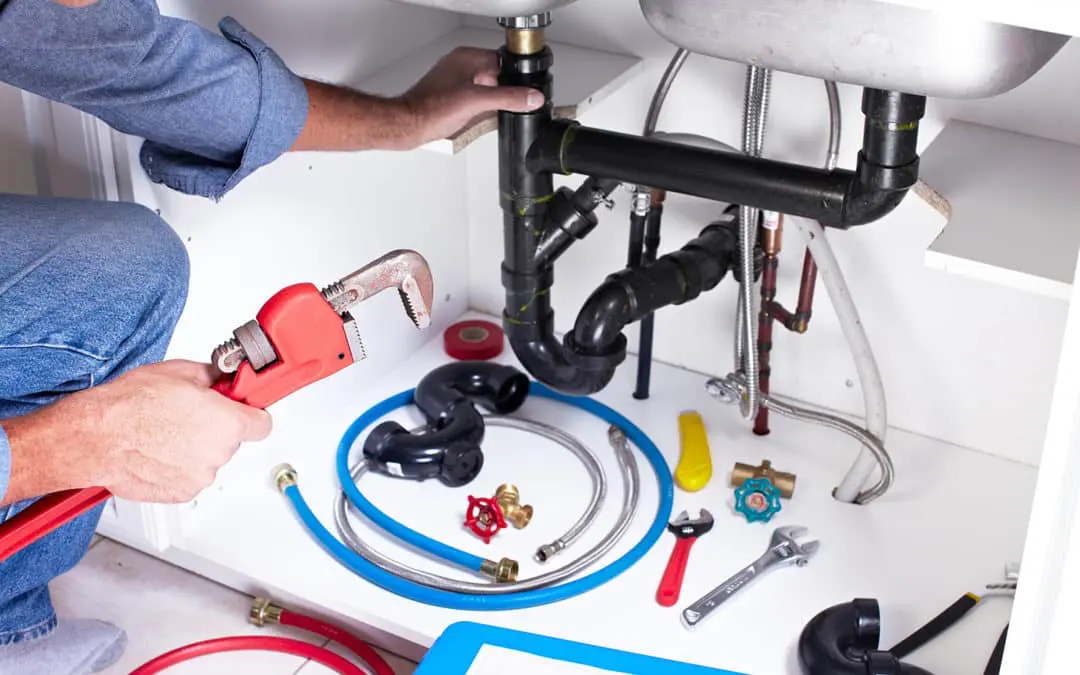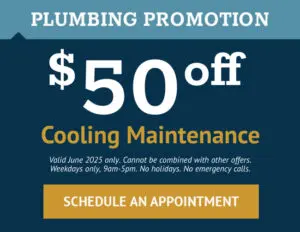If you hear a loud thud when you cut off your water, the problem could be more than just a noisy annoyance. A loud pounding coming from your pipes, dishwasher, or washing machine when the water shuts off could be causing major damage. Water hammer, the name given to the thud you hear, can increase the wear and tear on your pipes.
What Is Water Hammer?
When you open a faucet in your home to allow water to run, water rushes to the source to get there as quickly as possible. When you turn the faucet or shower off, the rushing water suddenly has nowhere to go and slams into the closed valve. The hydraulic shock created by the water hitting the valve is the noise you hear in your pipes. Over time, the constant slamming of the water can cause fittings to loosen, damage to appliances, or create cracks in pipes.
Water Hammer Damage
Depending on the age and quality installation of your pipes, the sudden stop of the rushing water could cause your pipes to vibrate. Pipes should be securely fastened to the joists, but if they’re not, the water hammer jolt could cause the pipes to bang into your walls. The constant hitting will not only create cracks in your pipes, but it could also damage the integrity of the wall.
As the water pressure continue to hit again the valve, pipe fittings can begin to loosen. The challenge in most cases is that the pipes are within your walls or behind appliances, so you don’t notice when the pipes become loose. What begins as a small leak can quickly turn into a major plumbing problem if the pipe disconnects or breaks.
How To Stop Water Hammer
There are a few options when it comes to eliminating water hammer noise and potential damage. While most newer homes are built with plumbing mechanics that help prevent water hammer, even those methods can sometimes fail. Here are the four ways to repair water hammer in your pipes:
1. Air Chambers
Homes built over the past several decades are typically constructed with air chambers in the plumbing system. The small, vertical pipe fits just behind the valve. The air chamber’s purpose is to hold air to serve as the shock absorber when the water flow is suddenly turned off.
After years of use, however, air chambers can fill with water, rendering them nearly useless against water pressure. If your home’s plumbing is equipped with air chambers but water has collected inside,
you can typically remedy the problem yourself.
Turn off your home’s main water valve.
Open a faucet on each level of your home to release the remaining water.
The chamber will eliminate the water and refill with air. Turn the water valve back on.
It’s worth the investment to have air chambers installed if your home wasn’t constructed with the preventative piece.
2. Tighten Loose Pipes
Prevent water hammer damage by tightening loose pipe straps and securing the pipes to the joists or studs in your wall. Adding foam insulation around the pipes can also help absorb some of the shock from the water hammer jolt. Keep in mind this method will only work for minimal water hammer. For properties with a severe issue, another solution will be needed.
3. Water Shock Arrestors
The shock of water hammer can be absorbed by arrestors. Water shock arrestors work well if air chambers aren’t a viable solution. The arrestors are designed with an air pocket and spring that can handle the impact of intense water pressure. This solution is often used in commercial construction but will need to be replaced when the spring reaches its lifespan.
Arrestors are typically easy to install and can be used on washing machine valves or utility sink faucets. The screw-on fittings make them an ideal solution for problem areas.
4. Water-Pressure Regulator
When the main water pipe feeding your home distributes at a high water pressure, water hammer can occur. Gauge the water pressure in your home. Normal levels run between 30 and 60 psi, but going above this range could lead to loud pounding, pipe breaks, or damaged appliances.
Installing a water pressure regulator will help alleviate the water hammer issue. It’s best to have the regulator installed where the main water line enters your home. This device will help extend the life of your pipes and appliances in addition to lowering your monthly water bill. Once the regulator is in place, you can adjust it to a water pressure level of 50 psi or below.
Water Hammer In Your Home
Understanding what causes water hammer in your home can help you take the best step in correcting the issue and protecting your plumbing system. High water pressure or old plumbing not built with air chambers are the two most common issues that lead to the problem. If you’re unsure of your home’s water pressure, purchasing a gauge is an inexpensive way to make a determination. Screw the gauge into your kitchen faucet. Ensure that all other faucets or water-use appliances are off. Turn the faucet on, completely opening the valve. The gauge will measure the water pressure. Remember that the normal range is 30 to 60 psi, with major damage possible at 100 psi.
If your home’s water pressure needs to be lowered, call your local utility company. They will usually send someone out to adjust the level for you. If that doesn’t solve the water hammer issue, have a professional plumber install a pressure regulator to help control the impact.
Don’t ignore the clanging pipes or loud thud when you turn off your water. The ongoing pressure against the pipe valves and joints can cause major damage down the road. Test your water pressure and opt for the water hammer solution that best fits your plumbing and your budget. If you’re unsure how to stop water hammer in your pipes, call the Flotechs team for reliable, fast service that will restore and protect your plumbing.



